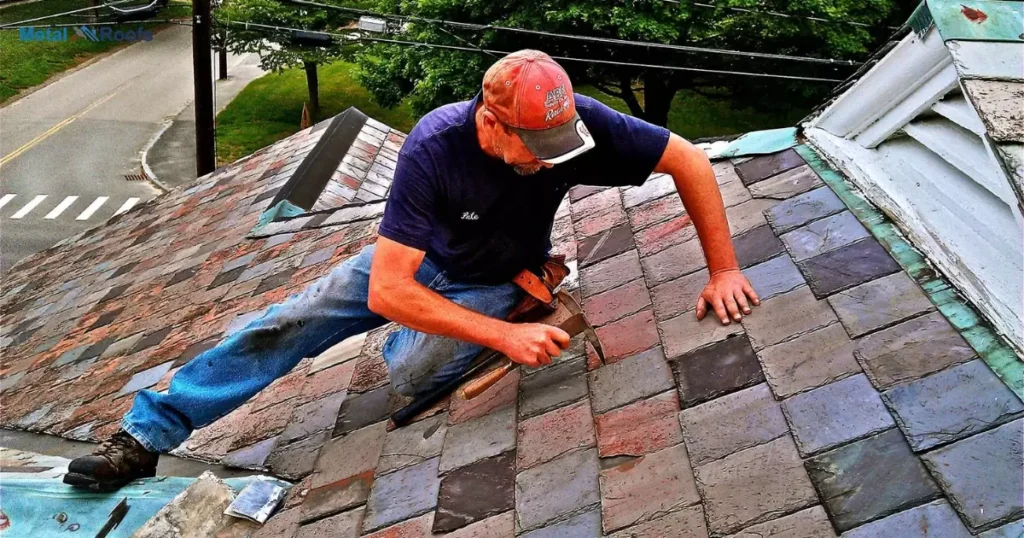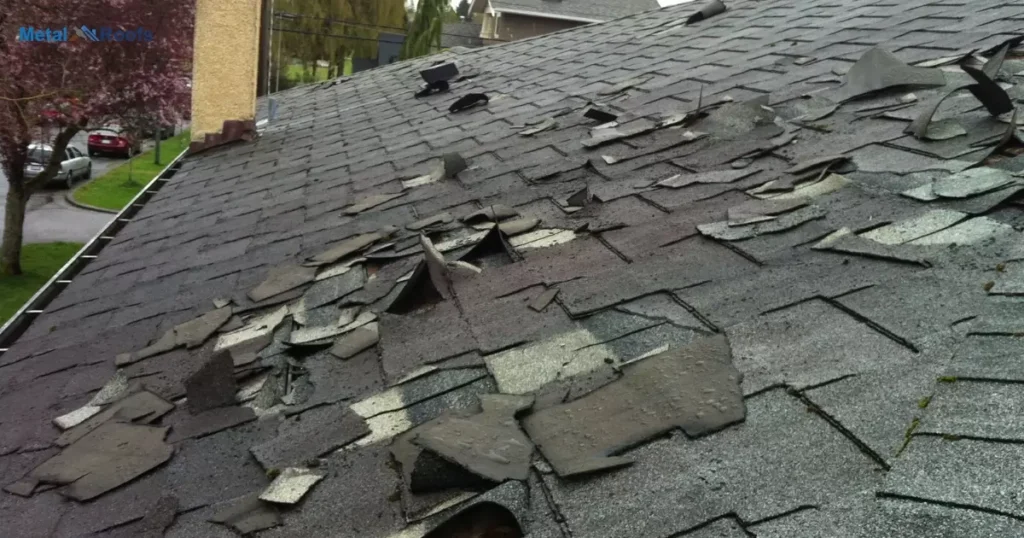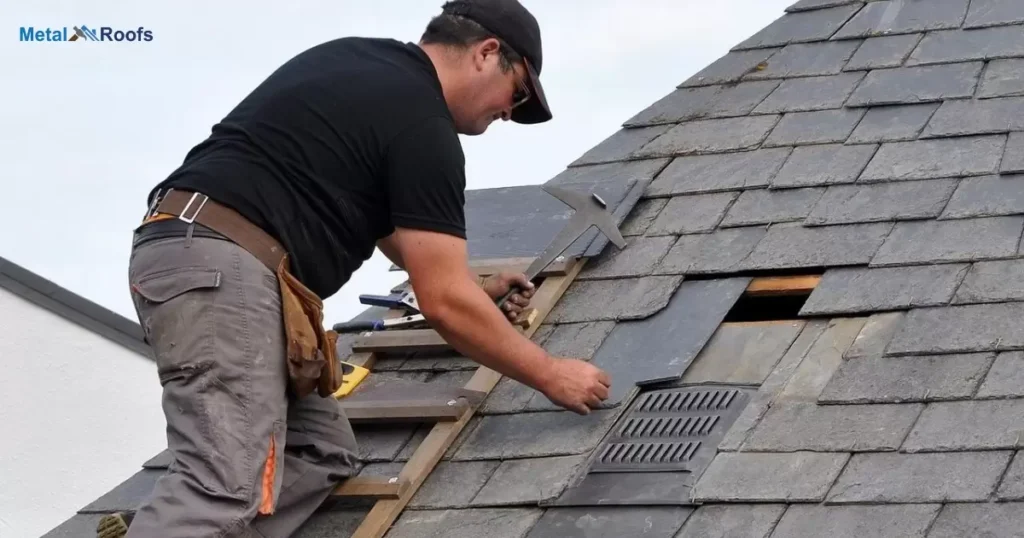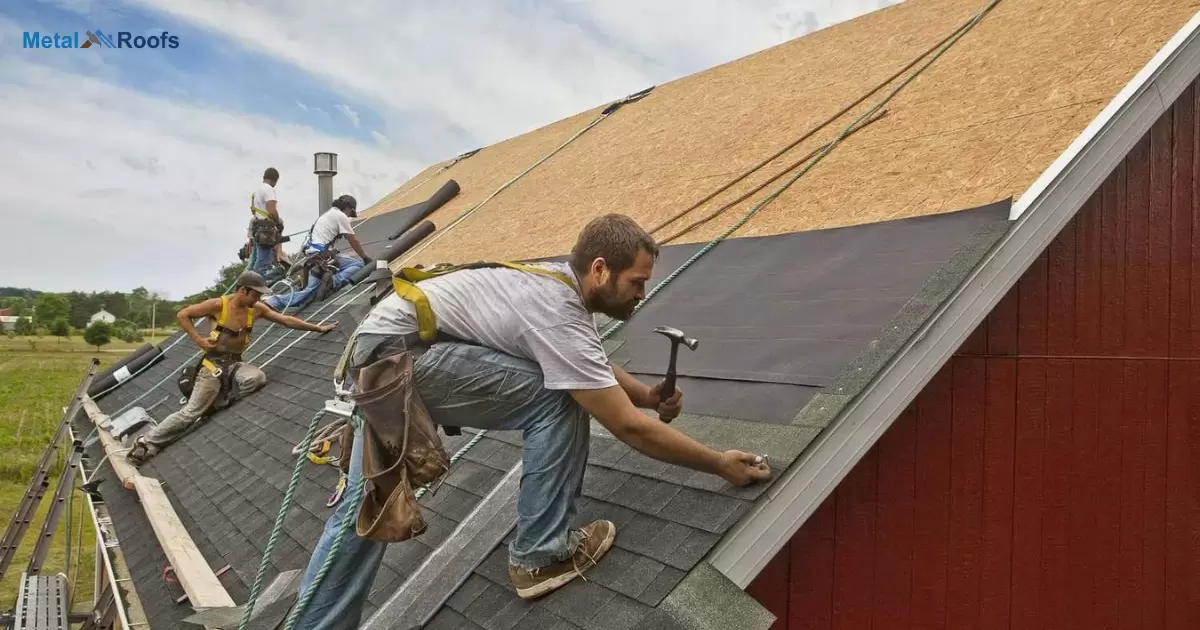Repair granular loss on a roof by fixing missing granules on shingles. Apply roofing cement to damaged areas and add matching granules. This repair helps protect the roof and extend its life. Regular maintenance can prevent further issues and keep your roof in good shape.
Noticing missing granules on your roof can be worrying. But you can fix it with some simple steps. How to repair granular loss on roof? with our easy guide. Acting early can help prevent bigger problems and extend the life of your roof. Keep your home safe and dry.
Once you understand granular loss on your roof, you can start repairs. Here’s how to stop condensation on metal roof and repair granular loss with simple methods. You can fix these problems yourself or seek help from a professional.
Key Takeaways
- Use safety gear and a stable ladder.
- Check for missing granules and damaged shingles.
- Remove debris from the damaged spot.
- Spread a thin layer on the affected area.
- prinkle granules over the wet cement.
- Ensure they adhere to the cement.
Roof Leaking Repair
Fixing a roof leak is important to prevent further damage. Start by finding the leak. Look for water stains on the ceiling inside your house. Then, go outside and inspect the roof for any damaged shingles or obvious signs of the leak. Clear away any dirt or debris around the area where the leak is coming from.
Once the area is clean, apply roofing cement to the damaged spot. Spread the cement evenly over the area to ensure a good seal. If needed, press a new shingle into place over the cement, making sure it sticks well. Allow the cement to dry fully before checking for other leaks.
Leaky Roof Repair
Fixing a leaky roof starts with safety. Wear non-slip shoes and use a sturdy ladder. First, find the leak. Look for water stains or wet spots. Check for damaged or missing shingles. Clean the area around the leak. Clear away dirt and debris.
Next, use roofing cement to seal the leak. Spread a thick layer over the hole. Press a new shingle or patch into the cement. Make sure it sticks well. Apply more cement around the edges of the patch. Let it dry completely. If the leak persists, call a professional roofer.
Roofing And Maintenance

Roofing needs regular care to stay strong. Inspect your roof every few months. Look for missing shingles or cracks. Clean off leaves and debris. Fix small issues right away. This stops bigger problems later. Always think about safety first.
When you see missing granules, act fast. Clean the area and apply roofing cement. Sprinkle matching granules over the cement. Press them in to make them stick. Let the area dry well. If you see lots of damage, call a pro. A strong roof means a safe home.
Roof Repair Solution
Fixing a roof can be easy if you follow some steps. First, make sure you have safety gear. Check the roof for damage like missing granules or broken shingles. Clean the area by removing dirt and leaves. Next, spread roofing cement on the damaged spot. Sprinkle matching granules over the cement.
Press the granules into the cement so they stick. Let it dry completely. If the roof has a lot of damage, you might need a professional. For small fixes, you can do it yourself. Just remember to work safely and follow the steps. Check your roof regularly to catch problems early.
Granule Loss On Shingles
Granule loss on shingles happens when the small, protective granules fall off. This can happen due to age, weather, or poor installation. When granules come off, shingles lose their ability to protect the roof. This can lead to leaks and damage inside the home. Regular inspections help spot granule loss early.
To fix granule loss, clean the area first. Then, apply roofing cement to the bare spot. Sprinkle matching granules over the cement. Press them down to make sure they stick. Let the cement dry completely. If there is a lot of damage, call a professional roofer. Regular care can help extend the life of your roof.
Granular Loss On Roof
Granular loss happens when the tiny granules on shingles wear away. These granules protect the roof from sun and weather damage. Without them, the shingles can become weak. Granular loss can lead to leaks and higher repair costs. Inspect your roof regularly for these issues.
To repair granular loss, clean the damaged area first. Apply roofing cement and add new granules on top. Press the granules down so they stick. Let everything dry completely. For large problems, consider hiring a professional roofer.
What Causes Granular Loss On Roofs?

Granular loss on roofs happens when the protective granules on asphalt shingles wear away over time. These granules shield the shingles from sun exposure and harsh weather. The main causes include aging roofs, prolonged exposure to UV rays, and severe weather conditions like hail or windstorms.
When the granules erode, the underlying asphalt becomes vulnerable to damage, leading to potential leaks and reduced roof lifespan. Regular inspection and maintenance can help identify and address granular loss early on, preventing more significant issues down the road.
Choosing The Right Repair Method
Choosing the right repair method is key for fixing granular loss on your roof. First, inspect the damage to see if it’s minor or severe. For small issues, apply roofing cement and granules. For bigger problems, call a professional roofer.
Roof Coating
Roof coating can be a good option for repairing granular loss. It adds a protective layer over the shingles. Choose a coating that matches your roof type. This method can extend the roof’s life and improve its condition.
Roof Sealant
When choosing the right repair method, roof sealant can be a good option. It helps protect the roof from leaks and further damage. Select a sealant designed for your roof type. Apply it carefully to ensure a strong seal and extend your roof’s life.
Roof Replacement
When deciding between repair methods, roof replacement might be the best option. It is ideal for severe damage or when the roof is old. A new roof offers better protection and longer-lasting results. A professional can help you choose the right method for your situation.
Applying Roof Coating For Repair
Applying roof coating for repair starts with ensuring safety. Wear your gear and set up the ladder securely. Inspect the roof closely for areas needing repair. Clear away any debris around the damaged spots. Apply the coating evenly over the affected areas.
Use a brush or roller for smooth application. Let the coating dry completely before checking the repair. If needed, apply a second coat for better protection. Always follow safety guidelines and inspect your work afterward for a job well done.
Diy Granular Loss Repair Tips
Repairing granular loss on your roof can be done with these DIY tips:
Clean the Area: Start by cleaning the affected area thoroughly to remove any loose granules and debris. Use a brush or broom for this.
Apply Roofing Cement: Use roofing cement to fill in the areas where granules are missing. Apply a generous amount to ensure it adheres well and covers the exposed surface.
Spread Granules: Sprinkle matching granules over the wet roofing cement while it’s still tacky. Press them gently into the cement to ensure they stick.
Allow to Cure: Let the repair dry and cure according to the manufacturer’s instructions for the roofing cement you used.
Inspect and Repeat if Necessary: After it’s dry, inspect the repair. If needed, repeat the process to ensure all areas are properly covered and sealed.
To work safely, especially when on a roof, and consider consulting a professional if the damage is extensive or if you’re unsure about making the repair yourself.
Professional Granular Loss Repair Services

When dealing with granular loss on your roof, sometimes it’s best to call in the professionals. They ensure safety by using proper gear and securing the ladder. Professional services inspect the roof thoroughly to pinpoint all damaged areas. Cleaning the site of any debris comes next, preparing it for repair.
Applying roofing cement evenly is crucial to the process, followed by carefully sprinkling matching granules. The professionals press these granules firmly into place before allowing everything to dry thoroughly. For extensive damage, their expertise ensures a thorough and lasting repair, giving you peace of mind about your roof’s condition.
Maintaining The Repaired Roof
Once you’ve repaired your roof, it’s essential to maintain its condition. Start by checking for any new damage regularly. Keep the roof clean from leaves and debris to prevent future issues. Ensure gutters are clear to avoid water buildup.
Inspect the attic for leaks or signs of moisture. Trim overhanging branches to prevent damage from falling limbs. Lastly, consider scheduling annual inspections by a professional roofer for thorough maintenance. Taking these steps will help extend the life of your roof and prevent costly repairs in the future.
Frequently Asked Questions
Can You Add Granules To A Roof?
Yes, you can add granules to a roof. First, clean the damaged area. Then apply roofing cement and sprinkle granules on top. Press them into the cement for a good bond. Let it dry completely for the best results.
How Much Granule Loss Is Too Much?
Granule loss on a roof is a serious issue if it’s extensive. If you see large bald spots or missing granules over a wide area, it is too much. Small areas of loss are normal, but big patches indicate a problem.
What Does Granular Loss Look Like?
Granular loss on a roof looks like bald or shiny spots on shingles. The granules that protect the shingles are missing. You may see loose granules in the gutters or on the ground. The shingles may also look worn or damaged.
Conclusion
Repairing granular loss on a roof involves careful inspection and cleaning. Applying roofing cement and matching granules ensures effective repair. It’s crucial to press the granules firmly and allow the cement to dry completely.
For extensive damage, consider consulting a professional roofer to ensure lasting repairs and safety. Regular maintenance can help prevent future granular loss and preserve the integrity of your roof.











